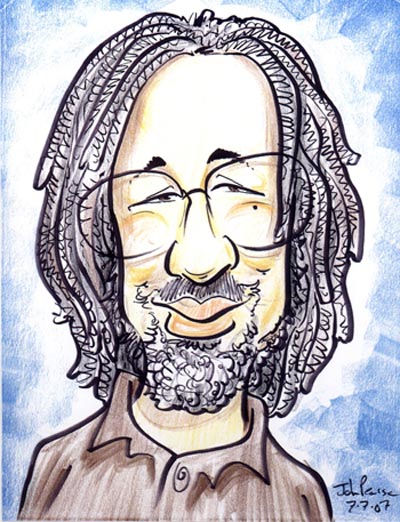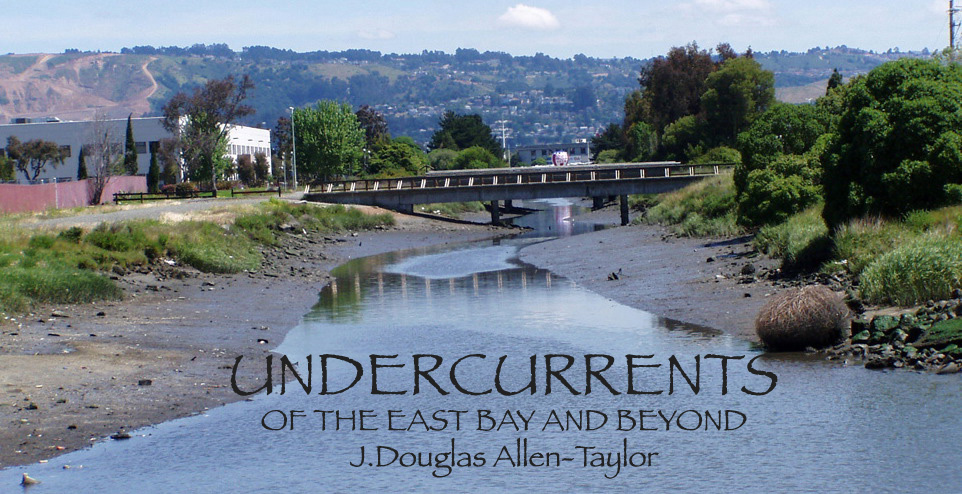|
|
BREAKING THE OAKLAND POLICE STALEMATE
November 23, 2007
Once, it is said, a basketball fan came up to Oakland native and Boston Celtic star Bill Russell and asked him what it was like to guard Wilt Chamberlain. Russell, so the story goes, gave the fan one of his famous quizzical looks, thought about it for a moment, and then asked back, “What’s your frame of reference?”
In many ways, during the recently-concluded debate over police 12 hour shifts in Oakland, I felt the same way. Like a spectator, without any frame of reference to judge the various arguments.
For those who haven’t followed, an arbitrator—they are always identified in the press as “impartial arbitrators” to differentiate them from the other kind, I suppose—ruled last week that the City of Oakland can institute 12 hour shifts. Oakland Police Chief Wayne Tucker wanted to institute the change to the 12 hour shifts, our powerful friends at the Oakland Police Officers Association (OPOA) police union opposed it, and when they couldn’t settle it during negotiations, they sent it to the impartial arbitrator, Charles Askin.
Following the initial breakdown is easy. Oakland police officers currently work shifts that consist of 10 hours a day. They do this for four straight days, then take a three day weekend, if I understand it right, and then start their week all over again. This is a common shift pattern in some industries, giving the same hours of work in a week—40—that you have in the standard 5 day/8 hours a day office hour shifts, and the three days off for a weekend makes it popular among many workers.
For managers trying to fit four day-10 hour shifts into the standard five day work week, this can be something of a challenge, as the manager has to make sure that there are enough workers coming in on Mondays (covering the Monday-through-Thursday shift) and enough workers coming in on Fridays (covering the Tuesday-through-Friday shift).
The management problem becomes infinitely more difficult if you are trying to fit the four day-10 hour shift into a 24 hour a day operation, such as are run by police departments. The reason for that difficulty is easily seen. If your first 10 hour shift works from 8 a.m. to 6 p.m. and your second 10 hour shift works from 6 p.m. to 4 a.m., that leaves a 4 hour hole from 4 a.m. to 8 a.m. The hole gets covered by having a third, overlapping schedule running from, say, 1 a.m. to 11 a.m. But doing that means that during some hours of the day, from 1 a.m. to 4 a.m. and again from 8 a.m. to 11 a.m., you end up having two shifts of officers out on the street.
The Oakland Police Department actually runs a slightly more complicated schedule, with slightly different hours and two night shifts coming on at staggered times.
From that light, one can easily see why the 12 hour shifts are so attractive to those who must manage a 24 hour a day system. You can schedule shift changes at noon and midnight, for example, and gone is the four hour hole. You can’t fit that into a 40 hour week, of course (I’ll wait, while you try), but the City of Oakland got around that in the recent negotiations by proposing what you might call a staggered two-three/14 day system. Under that system, officers work 2 days on, 2 days off, 3 days on, 2 days off, 2 days on, and 3 days off over a 14 day period, adding up to 84 hours worked, or a 42 hour work week. For the schedule to operate, officers must work every other weekend.
So far, this is standard time management stuff, and if you’ve got a good head for such things, or a spreadsheet program and about fifteen minutes of time to kill, you can fiddle around and figure out the angles yourself. Beyond that, however, you begin to get into insider baseball, or basketball, where the average observer gets lost.
In the weeks leading up to the arbitrator’s ruling, we began hearing what you might call the 11th hour problem by the OPOA and their various community supporters in arguing against the 12 hour day. So the argument goes, a police officer catches a call on the 11th hour of their 12 hour shift, a dangerous call, in which they must pull their weapon and make a life or death decision. The officer is tired after pulling such a long shift, and their judgment could be impaired. Under such circumstances, so the argument went, do you want officers with guns out on the streets making such decisions? For anyone who has worked a 12 hour shift on any kind of job, the argument was compelling. It was particularly compelling for people who are normally critical of the police, with the sort of wicked twist that if you don’t trust these guys completely when they’re clear-headed, why would you want to trust them when they’re yawning and sleep-stressed.
Even while ruling in favor of the 12 hour shifts, Mr. Askin, the arbitrator also noted another compelling argument against it, writing that “it appears that the 4/10 schedule as currently configured (in part because of the six-hour daily overlapping factor) provides superior staffing during weekend and latehour periods when crime activity is greatest.” Mr. Askin called that “a disquieting and significant disadvantage of the City’s proposal.”
The counter-argument from police management and those who supported the city’s negotiating position was that Oakland police are racking up hours overtime as a norm under the current system, some of it mandatory, some of it voluntary. In either case, so the argument went, the same 11th hour problem was now occurring, and the real howling from the police officers was about losing their overtime pay and veteran officers having to work on weekends when they’ve gotten used to being home. And even with that “disquieting and significant disadvantage” of losing the automatic police buildup during high crime hours, the arbitrator, Mr. Askins, concluded that the 12-hour shift “provides more advantages and will better serve the interest and welfare of the public in the [Oakland Police] Department’s mission to improve its ability to suppress and respond to crime.”
But as I said, here we are getting into insider discussion where those who are not familiar with police practices in general and Oakland’s situation in particular start to get at a loss.
I’ve pulled twelve hour shifts, and more, on a construction site, in a mill, and at a computer keyboard or a typewriter, and the last couple of hours of those activities can be brutal, and my work efficiency down. But that’s steady work that is either physically or mentally taxing—or, in some cases—both. I have no frame of reference for how that compares to police work, and I suspect that this is the same for the average citizen. Both from observation and common sense, we know from the outside that police work can be alternately tedious and boring—writing or taking reports, for example—or extremely stressful—such as arresting a resisting suspect. But in any given police officer’s day, how much is there of one and how much of there is the other, how much is taken up with routine patrol, how much is done in some type of investigation or crime scene activity that could result in court testimony, how much effect do these highly-different activities have on each other, and how has training and experience prepared officers to handle it? I freely confess, I have no clue.
But in this case, I don’t think I need to have a clue.
I don’t know if the 12 hour day will eventually end up being the best schedule for the Oakland Police Department or that what Chief Wayne Tucker calls “geographic accountability”—in which the existing six police service areas are consolidated into three geographical territories with a single commander and assigned police who stay within their area—is the best way to manage the department and get a handle on Oakland’s soaring crime situation. It may be that after the experience of six months or a year, the department decides that some tweaking in the system is needed. It may be that after the experience of six months or a year or more, the department decides that the 10 hour-4 day model was actually more efficient, or there is another staffing model out there that is superior. It may be that the proposed geographic boundaries doesn’t fit Oakland’s character, and the territories should be expanded to four. Or five.
For me, it’s a question of management and accountability. The current system is not properly working. Crime in Oakland is soaring along with overtime payments to police officers and in the current management configuration—where the OPOA has been able to block any changes—we appear to have reached a stalemate where we are stuck in place. It’s not the police chief’s 12 hour shifts that offers a way out of that stalemate. It is the freeing of the Oakland police chief to be able to make those types of management decisions that breaks the stalemate, and moves us forward. We hold the Chief of Police—and, ultimately, the mayor who has the hiring and firing power over the chief—accountable for the results. Do police officers come when we need them and call them? Are crimes being solved? Are the conditions that cause these crimes being reduced, however gradually? And to hold the chief and the mayor accountable for those results, we have to make sure that they have the freedom to manage. For me, that is what the recent arbitration was about, and that is what the current contract negotiations between the City of Oakland and the Oakland Police Officers Association is about.
How did Bill Russell guard Wilt Chamberlain? Not to put too fine a point on it, that’s what they hired Red Auerbach to keep up with.
|

